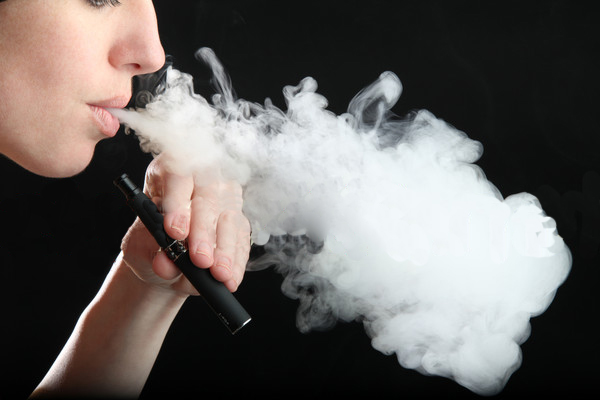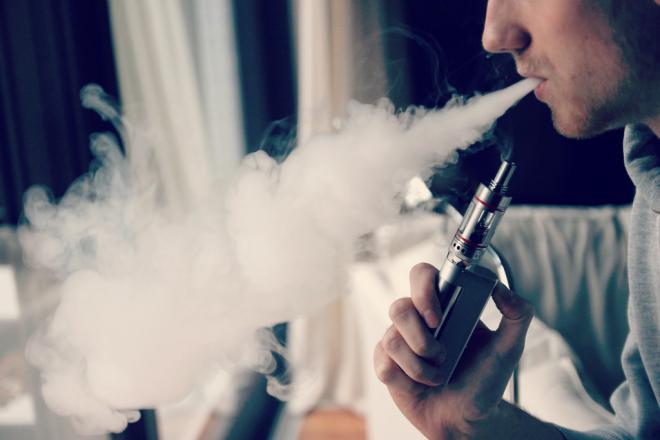
What Constitutes Secondhand Smoke?
Secondhand smoke (SHS) is commonly understood as exhaled smoke, which another person has already inhaled and absorbed into his or her lungs. It's expelled through the mouth and nose after the nicotine has been used up.
The American Cancer Society also refers to SHS as environmental tobacco smoke (ETS). They consider secondhand cigarette smoke as a mixture of two forms of smoke that come from burning tobacco:
Sidestream smoke: Smoke from the lighted end of a cigarette, pipe or cigar.
Mainstream smoke: The smoke exhaled by a smoke.
Aside from a good amount of nicotine and tobacco residue, cigarette smoke also has carbon monoxide, carbon dioxide, hydrocarbons and a plethora of toxic gases and irritating particles. So, whether you took a fresh puff from your cigarette or accidentally inhaled either sidestream or mainstream smoke, you'd still be putting your health at risk because of the toxic chemicals, such as tobacco-specific nitrosamines, present in the smoke.

What You Need to Know About Second-Hand Cigarette Smoke
The American Lung Association has made a short dossier on secondhand smoke, which "contains hundreds of chemicals known to be toxic or carcinogenic, including formaldehyde, benzene, vinyl chloride, arsenic ammonia and hydrogen cyanide."
For someone with a preexisting heart disease, exposure to second-hand smoke can potentially increase that person's risk of having a heart attack. Keep in mind that "even a relatively brief exposure can trigger a cardiac arrest," according to a report by the Institute of Medicine.
The levels of secondhand smoke found in restaurants and bars were 2 to 5 times higher than the amounts of SHS detected in residences where some members of the household are smokers. Because people who drank booze also smoked and many people liked to enjoy a cigarette after a satisfying meal, the levels of SHS in restaurants and bars were naturally 2 to 6 times higher than the amount of secondhand smoke found in office workplaces.
Casino employees are the unluckiest of them all. They're exposed to hazardous levels of toxic secondhand smoke at work, specifically tobacco-specific carcinogens. These cancer-causing compounds increased in their bodies as their work shifts progressed, based on a report from the National Institute for Occupational Safety and Health.
It's apparent that SHS is a major cause of many respiratory problems affecting non-smokers from children to adults. There's no question that cigarette use exposes both smokers and non-smokers to health risks that can be avoided by quitting or not starting at all.

What Constitutes Vapor Produced by E-cigarettes and Vaporizers?
The chemical composition of e-liquids basically consists of pharmaceutical grade nicotine, various flavorings, PG or propylene glycol (carrier solvent), VG or vegetable glycerin (carrier solvent), and distilled water. The carrier solvents, known as PG and VG, burn out completely after being exposed to a very high temperature. After the e-cig user has absorbed the nicotine from the aerosol, the exhaled vapor is now mostly made up of tiny particles of moisture that form into clouds or fog as soon as they touch the air and start losing heat.
Clouds exhaled by e-cigarette users vary in density because the thickness and amount of vapor produced depend on many factors. These contributing factors include the type of e-liquid used, the amount of heat applied, the resistance of the wire used to build the coils, the total resistance of the coils, the amount of e-liquid that was dripped onto the coil and wick, and more. But, experienced vapers know how to create clouds of vapor without "cooking" their vaporizers, and thereby, causing potentially harmful chemicals to appear in the resulting vapor.

How Does Passive Vaping Differ From Secondhand Smoke?
Various research studies on the chemical composition of exhaled vapor produced results in favor of e-cigarettes and e-liquids. Let these researchers' conclusions from these studies speak for themselves in defense of vaping:
McAuley, Hopke, et. al. published a research paper on the "Comparison of the effects of e-cigarette vapor and cigarette smoke on indoor air quality" and here's an excerpt of their results:
Non-cancer risk analysis revealed "No Significant Risk" of harm to human health for vapor samples from e-liquids (A-D). In contrast, for tobacco smoke most findings markedly exceeded risk limits indicating a condition of "Significant Risk" of harm to human health. With regard to cancer risk analysis, no vapor sample from e-liquids A-D exceeded the risk limit for either children or adults. The tobacco smoke sample approached the risk limits for adult exposure.
VOX Media highlighted a study on the health hazards of e-cigarettes and the vapors that they produce:
Maciej Goniewicz, of Roswell Park Cancer Institute, is one of the leading researchers in this area. In one study, he looked at 12 brands of e-cigarettes and found that their vapors were mostly composed of nicotine and a nicotine solvent (propylene glycol or vegetable glycerin). Also, the levels of toxicants and carcinogens in e-cigarette vapor were nine to 450 times less prevalent than in conventional cigarette smoke.
So, other than the residues of nicotine, propylene glycol, and vegetable glycerin that were not burned or absorbed, the researchers also detected some trace amounts of highly volatile compounds and tobacco-specific chemicals in levels that posed no significant risk to consumers.
While passive vaping doesn't pose a huge threat to public health, it seems that vapor from e-cigarettes has a few similarities with secondhand smoke. Vapor is likely to accumulate and linger indoors, even in a ventilated room, according to a 2014 study by Schober et al.
The research team measured levels of potential e-cigarette pollutants in a ventilated room while volunteers consumed e-cigarettes with and without nicotine for two hours and found a change in air quality. The concentration of polycyclic aromatic hydrocarbons (PAH) in the indoor air increased by 20%, while particulate numbers also increased. The authors concluded that exposure to e-cigarette pollutants might be a health concern, as fine and ultra-fine particles might be deposited in the lung.
Passive vaping involves secondhand vapor that doesn't leave the premises immediately. Unlike cigarette smoke, the clouds of vapor that e-cigarette users create tend to rise fast and dissipate into the air. Research on passive vaping turned up evidence that aside from secondary exposure to exhaled vapor, non-vaping adults and children may be also exposed to vapor residue from tertiary sources, such as fabrics and surfaces.
No comments:
Post a Comment